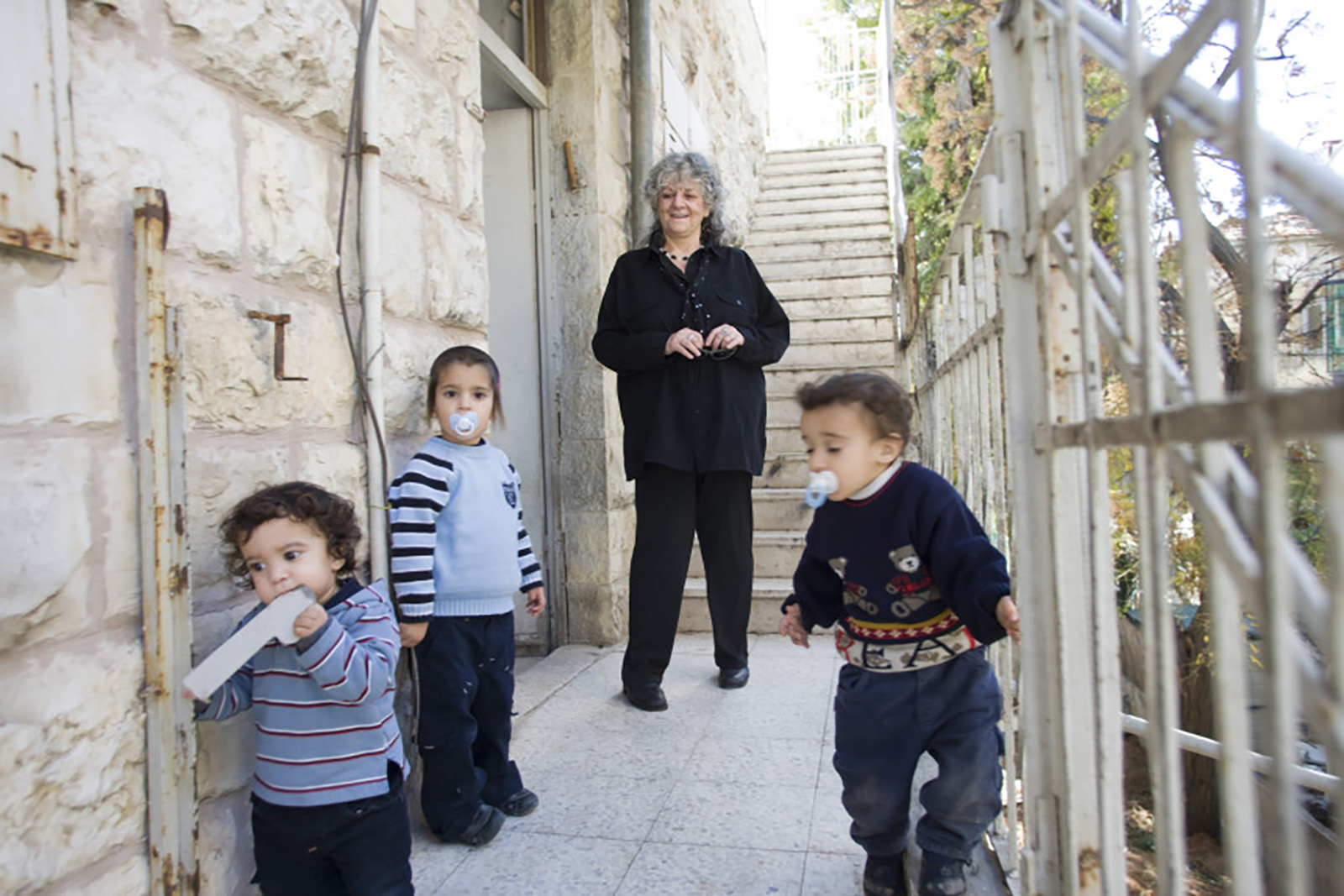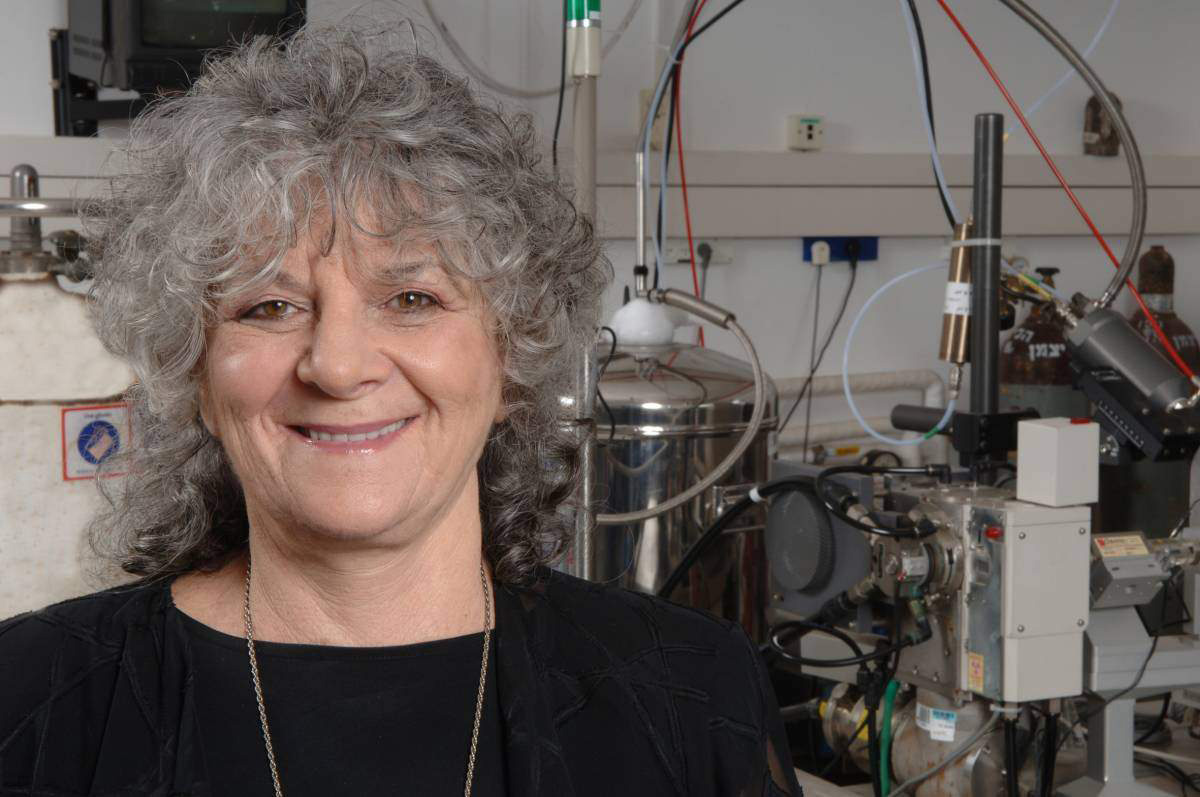How Ada Yonath Became The True Superhero of Ribosomes
Many Superheroes find themselves acquiring new powers as a result of injuries or accidents. Ada Yonath is no different, having suffered a serious concussion in a biking accident that inadvertently led her to a remarkable discovery, which in turn enabled her to unlock some of the most fundamental secrets of life itself. Now she’s using those secrets to fight one of the most important battles of modern medicine: the war against antibiotic resistance.
Paying her dues
Ada was born in Jerusalem in 1939 to extremely poor parents who shared a four-room apartment with two other families. Her father had terrible health problems and was frequently hospitalized until he eventually passed away when Ada was just 11 years old. Ada found herself being required to fill his shoes, working whenever possible to support her mother and the household financially.

She was also working to keep herself in education. Her parents had worked hard to get her into a prestigious grammar school but now there was no way that Ada’s mother could continue paying the fees. Ada began working around the school, doing everything from cleaning the chemistry laboratory to offering tuition services to other students. Fortunately for Ada, she was a gifted student and able to juggle her studies with the work needed to sustain them. In this way she managed to fund her education all the way through college, eventually ending up as a postgraduate student at Israel’s prestigious Weizmann Institute.
Climbing Everest twice
Ada’s early work at the Weizmann Institute was in what was then considered an obscure field; she established the only biological crystallography laboratory in Israel and one of only a handful worldwide at that time. Crystallography - the science of determining the arrangement of atoms in crystalline solids - was an unfashionable discipline, seen as a long-winded method of achieving objectives that could be arrived at far quicker through other means. Ada’s status at the Institute reflected this; she has spoken about how her work wasn’t just unpaid, but also conducted out of an office that was a converted bathroom with a plank of wood across the sink as a desk and a toilet seat for a chair.
"The brand new social experience where you activate your gaming skills as you train like a spy."
- TimeOut
Take on thrilling, high-energy espionage challenges across different game zones.

Despite these lowly surroundings, Ada had lofty ambitions. She was determined to shed light on one of the major outstanding questions concerning living cells: the process of protein biosynthesis: ”For this aim I wanted to determine the three-dimensional structure of the ribosome - the cells’ factory for translating the instructions written in the genetic code into proteins - and thus reveal the mechanics guiding the process.” This was a task that would take two decades to complete and which Ada has described as “climbing Mt. Everest only to discover that a higher Everest stood in front of us”.
Becoming the village fool
Ada’s methods were already unfashionable, but they took a further unconventional turn in 1977 when she was involved in a serious biking accident that left her with a lengthy concussion. She was ordered to rest for several months and her only reading options came from a local library. One day, she picked up a book on polar bears and discovered a vital clue to help her solve a problem that was preventing her from revealing the structure of the ribosome.

Ribosomes are highly intricate and delicate, not to mention flexible, unstable, and lacking internal symmetry - all things which make successful crystallography hugely difficult. Ada learned that the ribosomes of hibernating bears arrange themselves in a more orderly and stable fashion just before hibernation, allowing them to stay intact and potentially functional for many months. Ada realized that she had been examining the wrong ribosomes and instead turned her attention to samples adapted to survive in extreme conditions; in particular one of the few bacterial strains able to survive in the Dead Sea. With this new approach, she was well on her way to unlocking the ribosome’s secrets but, as she puts it: “Even after obtaining preliminary diffraction indications, when I described my plans… many distinguished scientists responded with sarcasm and disbelief. Consequently I became the world’s dreamer, the village fool, the so-called scientist, and the person driven by fantasies.”
A head full of ribosomes
Despite the derision that her work initially provoked, it soon became clear that Yonath had hit upon a hugely important discovery and over the following years she proved the value of her theory and developed important new techniques such as cryo-bio-crystallography, which involves exposing the crystal to extremely low temperatures to minimize the crystalline structure’s disintegration under X-ray bombardment. By the mid-1980s, her research had led to a far better understanding of the structure and functionality of ribosomes and, by the 1990s, her techniques were being used in laboratories around the world to rapidly advance scientific discovery.

The importance of this work is hard to exaggerate. Ribosomes are found in all living cells - human and non-human - and our improved understanding of them has led to enormous advances in all kinds of areas, but one of the most important developments has been in a field where Dr. Yonath’s team continues to lead the research: antibiotic resistance. More than 40% of modern antibiotics function by inhibiting the ribosomes of bacteria, and Ada’s laboratory has been able to closely examine the ways in which this process occurs and formulate new methods for overcoming the resistances that bacteria build up to antibiotics. As she puts it: “Our studies are providing structural information that can be used for the design of new and improved antibiotic drugs. Resistance to antibiotics is one of the biggest medical problems of the twenty-first century, so there’s an urgent need for additional effective drugs.”
One way to tackle the problem of antibiotic resistance is to use combinations of drugs that are more effective together than alone. Ada’s team collaborated with researchers at the Universities of Illinois and Hiroshima to identify one such synergistic pair, the antibiotics lankacidin and lankamycin.
Ada and her team have been showered with awards for their discoveries, including the Nobel Prize for Chemistry in 2009, but her vital work investigating the ribosome continues apace. She’s proven influential to a whole generation of researchers and her work has even given rise to a new phrase in Israeli society, where curly hair is now sometimes referred to as having “a head full of ribosomes”. Given the importance of her discoveries - and the difficulty she’s faced in achieving them - it’s hard to deny that her work has been truly Superheroic.
SPYSCAPE+

Join now to get True Spies episodes early and ad-free every week, plus subscriber-only Debriefs and Q&As to bring you closer to your favorite spies and stories from the show. You’ll also get our exclusive series The Razumov Files and The Great James Bond Car Robbery!


Gadgets & Gifts
Explore a world of secrets together. Navigate through interactive exhibits and missions to discover your spy roles.
Your Spy Skills
We all have valuable spy skills - your mission is to discover yours. See if you have what it takes to be a secret agent, with our authentic spy skills evaluation* developed by a former Head of Training at British Intelligence. It's FREE so share & compare with friends now!
* Find more information about the scientific methods behind the evaluation here.


Stay Connected
Follow us for the latest
TIKTOK
INSTAGRAM
X
FACEBOOK
YOUTUBE